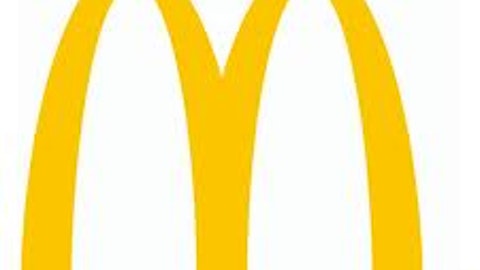The for-profit education industry in the United States is shrouded in controversy and concern. Investors are understandably shaken by poor financial performance and even worse stock price performance over the past year. Making matters worse, new student enrollment figures continue to decline for America’s biggest publicly-traded education companies. After dramatic declines at Strayer Education Inc (NASDAQ:STRA), Bridgepoint Education Inc (NYSE:BPI), and Apollo Group Inc (NASDAQ:APOL), are these stocks primed for comebacks and ripe for the plucking? Or, does each of these stocks deserve a failing grade?
The Good
A positive for stocks in the for-profit education industry is that they certainly aren’t expensive. For the time being, consider that Strayer, Bridgepoint, and Apollo are trading for trailing price-to-earnings ratios of 9, 4, and 5, respectively. In addition, these companies have conservatively capitalized balance sheets and generate strong returns on capital and assets.
Bridgepoint Education Inc (NYSE:BPI) and Apollo Group Inc (NASDAQ:APOL) seem to be in the best financial condition of the for-profit education stocks. The companies are extremely well capitalized, with cash and equivalents amounting to more than half of each company’s market capitalizations. Furthermore, Bridgepoint and Apollo have almost no long-term debt, holding long-term debt to equity ratios of just 7%.
For-profit education stocks have been besieged by concerns of government regulation serving a crushing blow to the industry in the form of cuts to the federal grants that these programs rely on. Last summer, Congress blasted the industry for placing the priority on advertisement and recruitment over quality of education. While it’s true that the current administration has spoken negatively about for-profit education, that doesn’t explicitly mean that the industry is doomed.
For example, a great amount of investor concern revolves around the status of Pell Grants, which provide need-based grants to low-income students and are crucial to for-profit educators. These companies derive the vast majority of their revenue from federal grants such as this. Due to the federal government’s continued lack of progress on tackling the budget deficit, investors are worried that the Pell Grant Program would be vulnerable to cuts. Fortunately for the industry, a report from the Congressional Budget Office showed that the Pell Grants Program is on pace to run a surplus in 2013 and 2014, and are not expected to receive budget cuts.
The Bad
However, don’t think that the dark clouds have lifted completely from the for-profit education industry. Cuts to Pell Grants were just one worry facing the industry; a separate concern is the dropping enrollment rates at these programs. Total enrollment at Strayer for the 2013 winter term decreased 5% from the same term in 2012. New student enrollments decreased 5%, and continuing student enrollment also decreased 5%.
Bridgepoint Education exhibited the same problem when it released its third-quarter results. The company had new student enrollments of approximately 20,500, compared with new student enrollments of approximately 22,000 for the same period in 2011, a decrease of 6.8%.
Apollo also revealed enrollment declines in its quarterly report. New degree enrollment dropped 15%, and total existing enrollment fell by 14% versus the prior year’s quarter.
The Ugly
Unfortunately, strong balance sheets and alleviated concerns regarding Pell Grants can’t entirely protect for-profit education investors from severely declining financial performance, which has been atrocious recently. Strayer was once a high-yielding dividend stock. As recently as a few months ago, the company paid a quarterly dividend of $1.00 per share and yielded 4% or more. Unfortunately, the high dividend yield could only temporarily mask the underlying fundamental deterioration of Strayer’s business. The company reported poor full-year fiscal 2012 results. Revenues for the year ended Dec. 31, 2012 decreased 10% year over year. Making matters worse, diluted earnings per share dropped 37% for the full year. The company suspended its dividend, and shares of Strayer have plummeted from over $100 per share to their current level of $52 in a matter of months.
On a positive note for Bridgepoint, revenue increased 6.5% during the first nine months versus the same period a year ago. Unfortunately, dramatically higher marketing and advertising expenses resulted in diluted earnings per share dropping 23% during the first three quarters. Shares of Bridgepoint have fallen along with its industry, collapsing from the mid-twenties at the beginning of 2012 to its current level of just $10 per share.
Apollo reported 2013 first-quarter revenue dropped a further 10%, after revealing that full-year 2012 revenue declined 10% as well. Fiscal 2012 net income dropped more than 22% from fiscal 2011. Shares of Apollo have followed suit, losing more than two-thirds of their value after climbing to over $57 per share in early 2012.
The Bottom Line
On the bright side, these stocks aren’t expensive. In fact, assuming revenue and profit figures for these companies don’t downright collapse, you could make the argument that shares of these stocks are cheap. However, that’s a fairly big assumption considering the problems surrounding the industry, including deteriorating financial performance and dropping enrollments.
Despite cheap valuations, there’s no escaping the fundamental problems that could prove to be disastrous for these stocks. Until these companies can get revenues, profits, and enrollments going in the right direction, you should give them failing grades.
The article Taking For-Profit Education Stocks to School originally appeared on Fool.com and is written by Robert Ciura.
Copyright © 1995 – 2013 The Motley Fool, LLC. All rights reserved. The Motley Fool has a disclosure policy.





